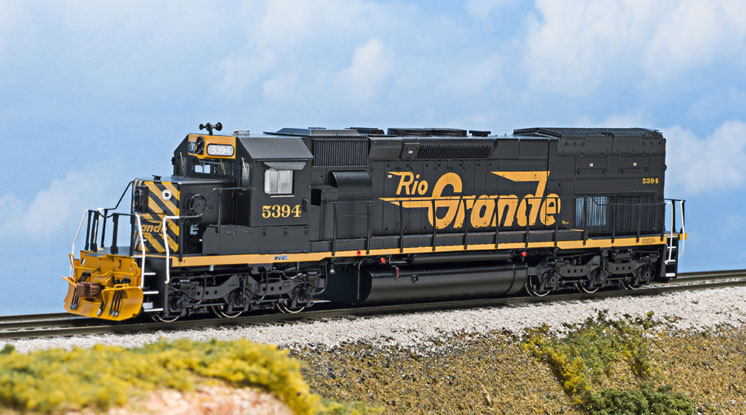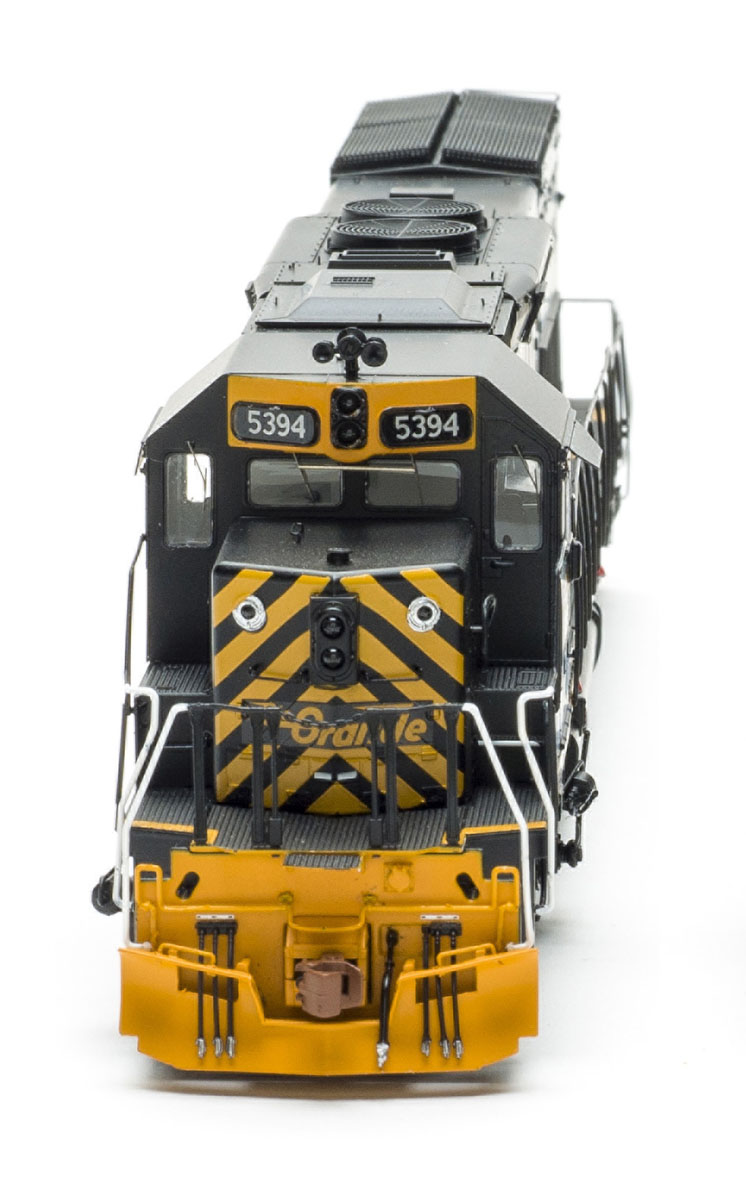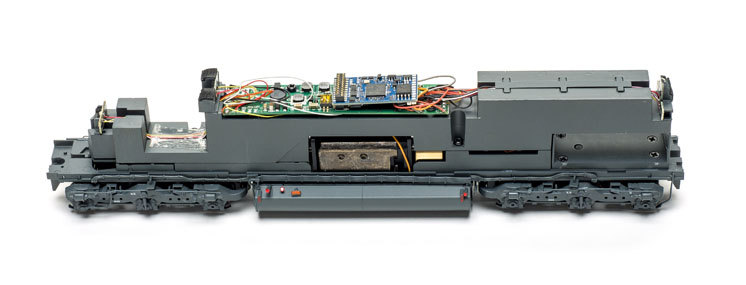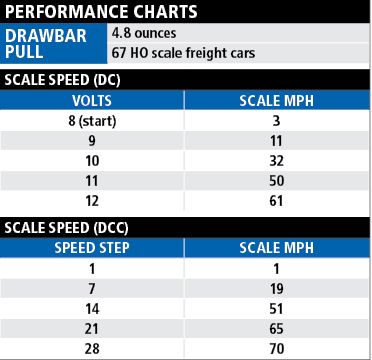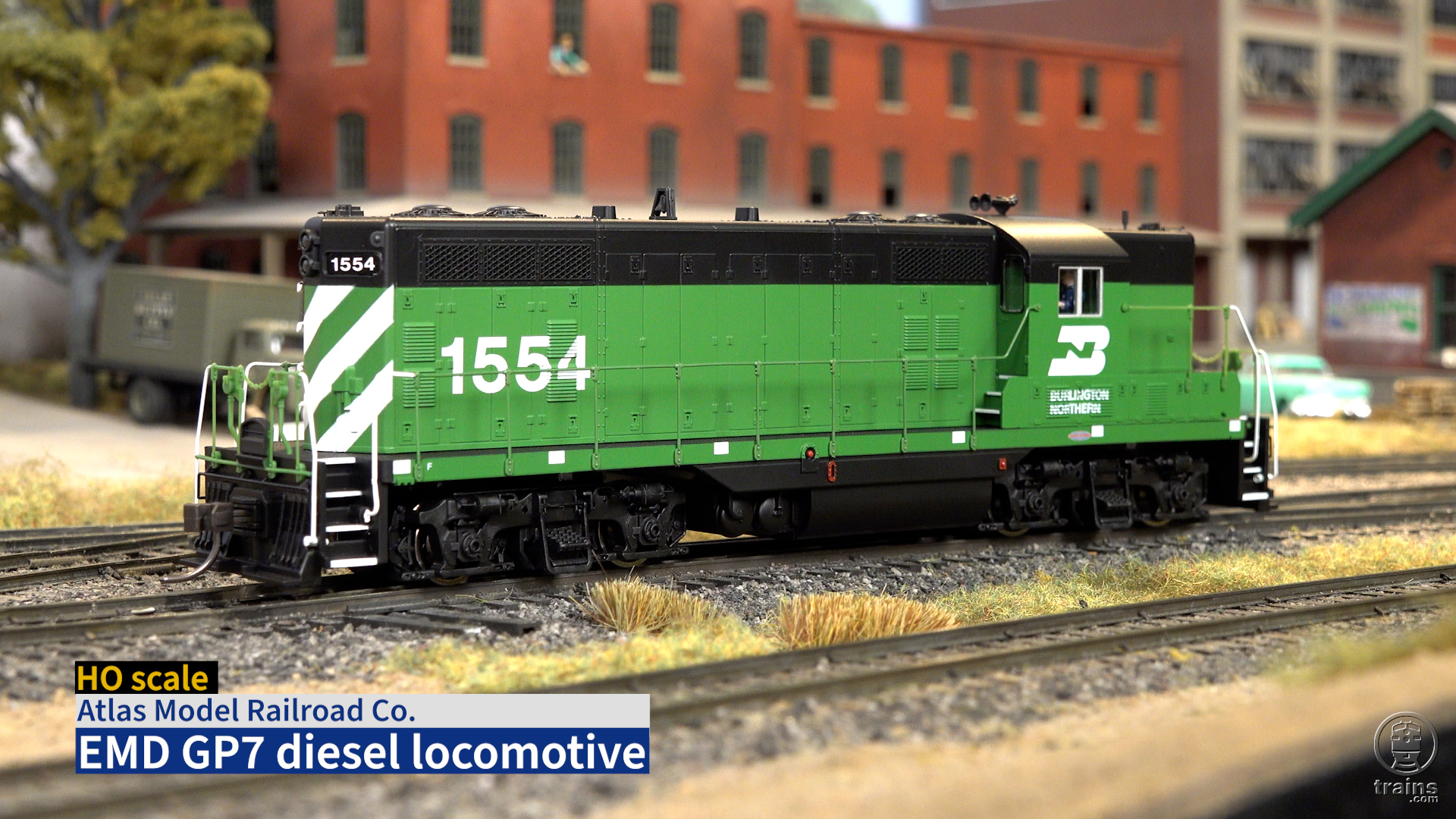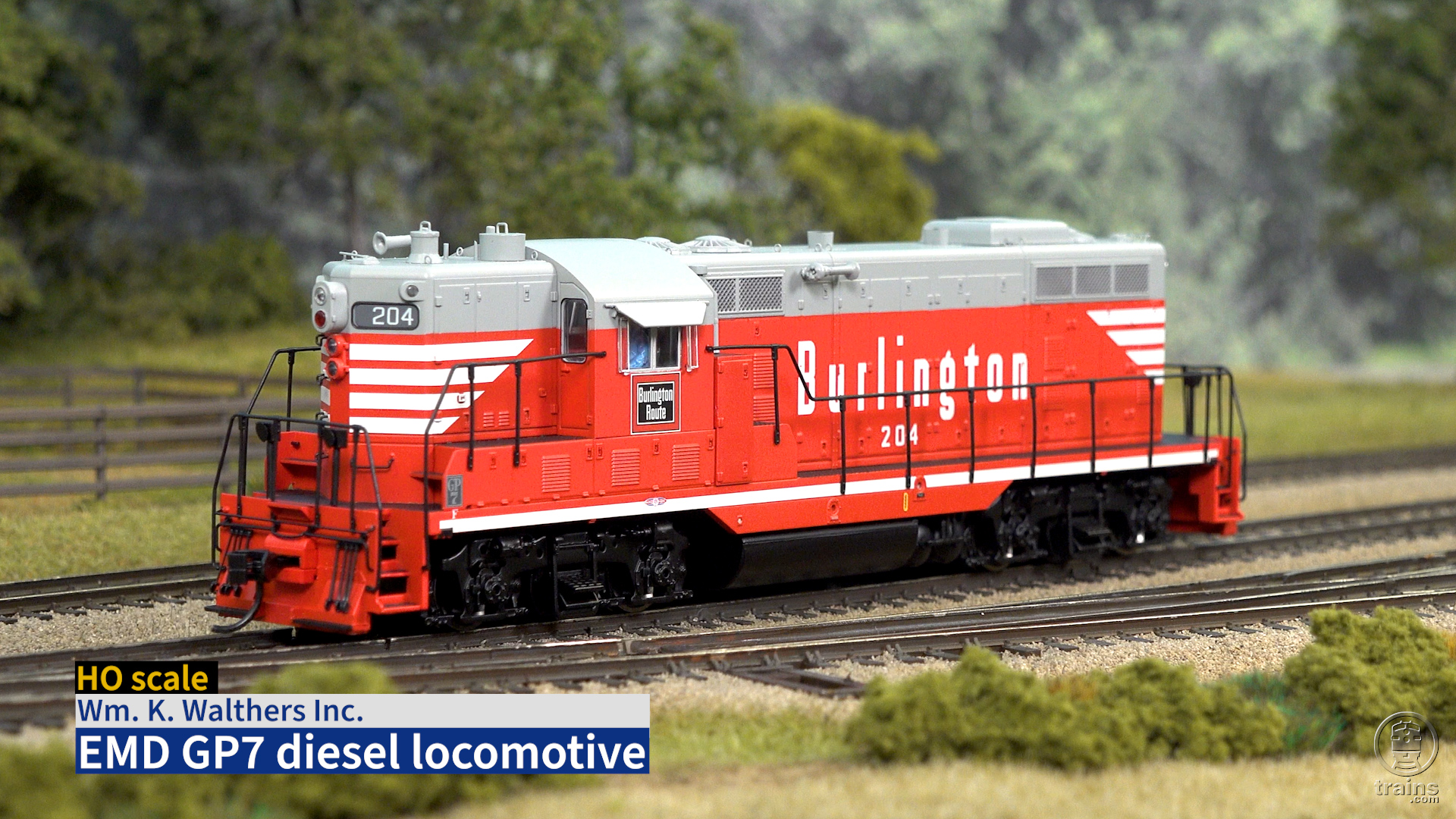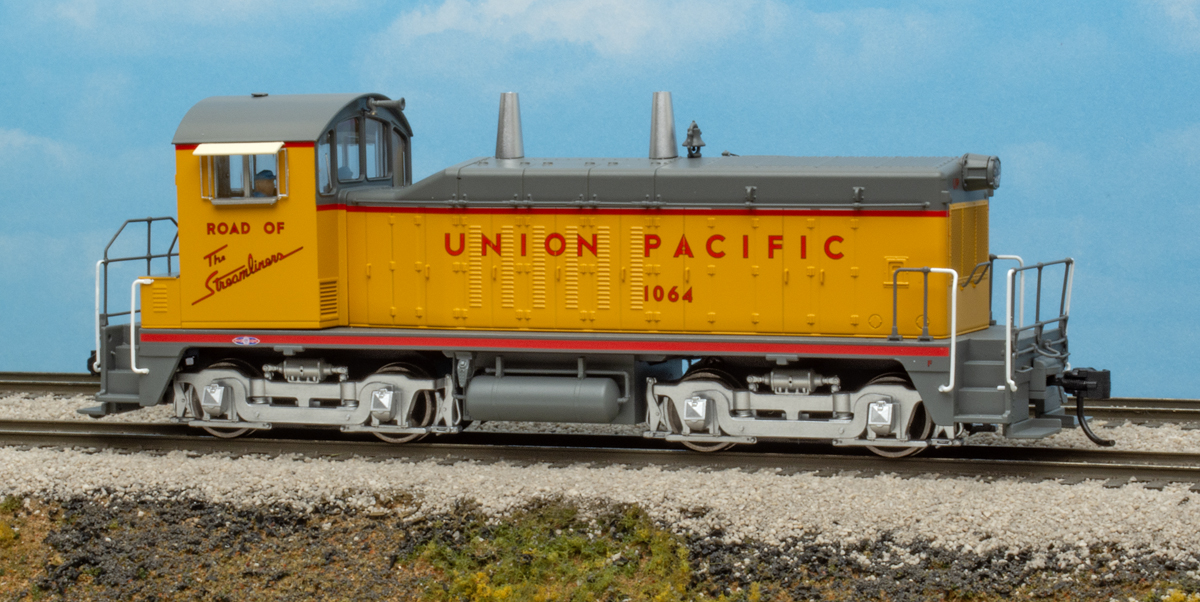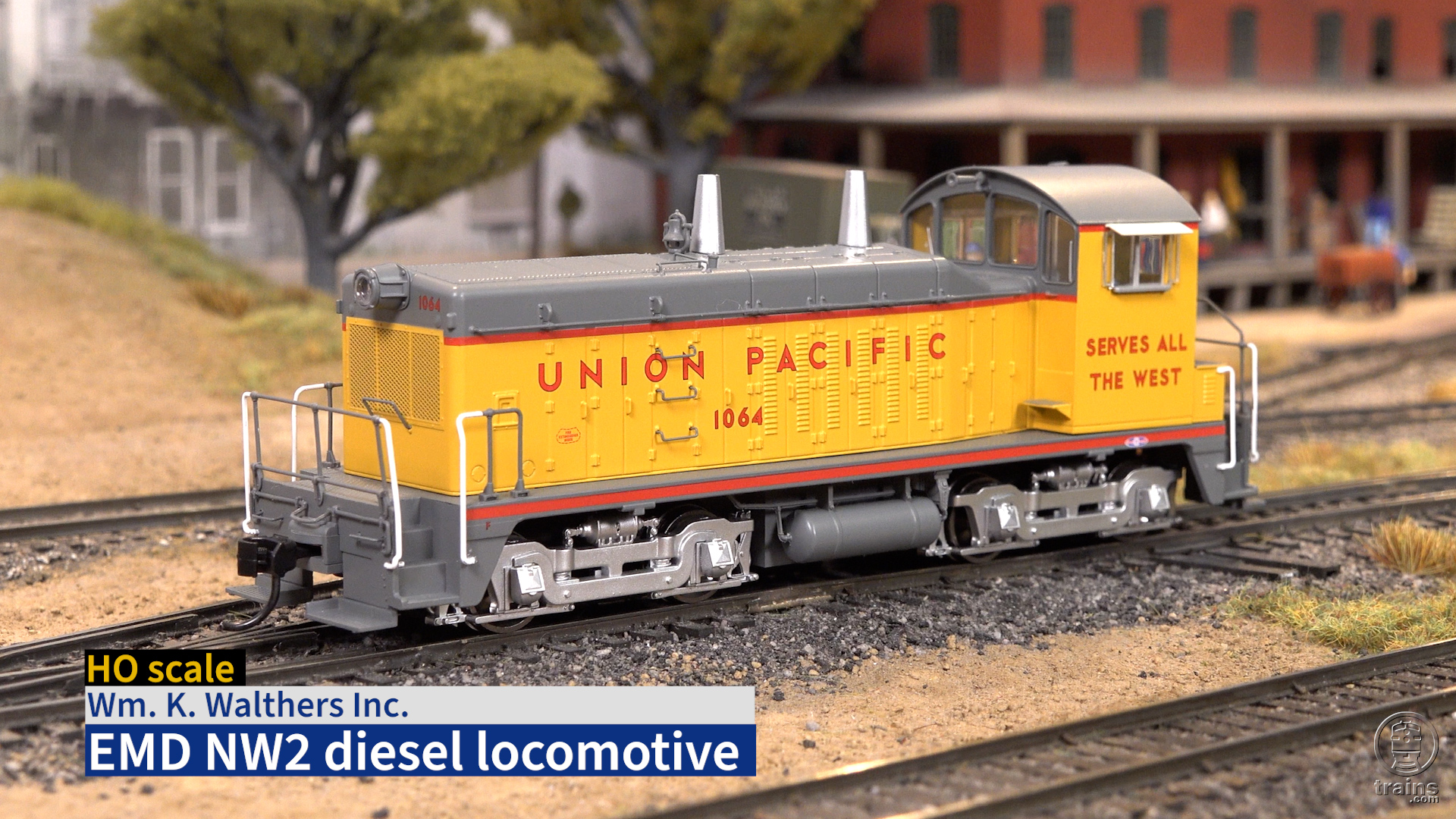There’s more to modeling an Electro-Motive Division (EMD) SD40T-2 tunnel motor than simply repositioning the air intakes on an SD40-2. The meticulously detailed ScaleTrains.com HO scale SD40T-2, part of the firm’s top-of-the-line Rivet Counter series, provides an exclamation point to that statement. The model is dimensionally accurate and available in several roadname- and roadnumber-specific versions.
Our review sample has a factory-installed ESU LokSound dual-mode decoder that operates on Digital Command Control (DCC) and direct-current (DC) layouts. A DC version is also available. Unlike previous offerings from ScaleTrains.com, there’s no lesser detailed, value-priced Operator version.
As of this writing, the first run of these models is sold out at the manufacturer, but models are available from retailers. New paint scheme variations have also been announced. See ScaleTrains.com for more information.
The prototype. After successfully collaborating with the Southern Pacific on the SD45T-2 in 1972, EMD applied the tunnel motor concept to the 3,000 hp SD40-2. These locomotives had a longer frame than a standard SD40-2 to allow for an enlarged radiator compartment with air intakes moved from the top of the long hood to the walkway level. This system allowed for more efficient engine cooling, especially in the tunnels and snowsheds of a mountain railroad.
While SP rostered the bulk of the SD40T-2s produced, the Denver & Rio Grande Western purchased a total of 73 units for Rocky Mountain service. The SD40T-2s served through the merger of the Rio Grande and SP in the late 1980s and the acquisition of that combined system by the Union Pacific RR in 1996. Although some tunnel motors were repainted for UP, most were scrapped or sold in the 2000s. Some SD40T-2s survive today on regionals or short lines.
The model. The ScaleTrains.com SD40T-2 matches prototype dimensions. The molded detail in the plastic body shell is well defined, including all seams and access doors. Handrails and grab irons are separately applied. The dynamic brake fans have see-through grills with separate fans underneath.
The most striking feature of the model is the rear air intake, the main spotting feature of a tunnel motor. As on the prototype, the space between the grills is completely see-through with none of the model’s mechanism visible. There’s also molded safety tread on the compartment floor, the bottoms of the radiator fans visible at the top, and bulkhead detail toward the front.
The manufacturer has produced different body shells to specifically match each modeled prototype. Our review sample models D&RGW no. 5394. The prototype was built in 1978. The model features the correct 88″ short hood with brakewheel and 4,000 gallon fuel tank, among many other details. Other versions have 81″ or 123″ short hoods and larger 4,400-gallon fuel tanks as appropriate. The HO diesel represents the D&RGW prototype as it appeared beginning in 1986, when it received Positive Traction Control (PTC) equipment. The PTC cabinet is behind the cab on the fireman’s side, and PTC sensors are on the axles.
The paint and lettering matches prototype photos. The end handrails and step edges are correctly painted white.
The mechanism. After removing the front and rear coupler boxes, I lifted off the body shell. The flywheel-equipped can motor is mounted in the center of the die-cast metal chassis. The drive shafts and gear boxes are concealed.
The LokSound decoder is plugged into a 21-pin socket on the main printed- circuit board attached to the top of the frame. All lighting is provided by surface-mount light-emitting diodes (LEDs). Sound comes from two well-enclosed sugar-cube type speakers.
Running trains. As shown in the charts at left, the locomotive accelerated smoothly on our DCC test track from 1 scale mph to a prototypical top speed of 70 scale mph. Out of the box, the locomotive has some momentum already programmed into the decoder.
Every aspect of the decoder’s sound, light, and performance features can be adjusted using configuration variables (CVs). Some commonly used CVs are listed in the printed instruction booklet.
I programmed our sample using an ESU LokProgrammer computer interface (sold separately for a manufacturer’s suggested retail price of $179.99). Even if you don’t use the interface, the LokProgrammer software is a helpful programming tool for LokSound decoders. You can download the software and an extensive LokSound decoder user manual for free at www.loksound.com.
With the locomotive’s address changed to the cab number, I placed the SD40T-2 on the point of a freight train on our HO scale Milwaukee, Racine & Troy. Pressing function 8 triggered an engine start-up sequence. The headlights, Gryralight, and class lights are all controlled by independent function buttons. Pressing F5 toggles the class lights between white, green, red, and off.
Pressing F1 rang the bell, and F2 blew the horn. Our D&RGW sample features the correct Nathan M3 horn sound. The decoder also includes 15 other horn sounds appropriate for different prototypes.
I pressed F9 to trigger Drive/Hold, which kept the speed constant while I used the throttle to manually notch the 645 diesel sounds. As the train headed downgrade, I pressed F4 and heard a realistic dynamic brake sequence. Other user-triggered effects include an independent brake, air-release “spitter” valves, and a headlight dimmer. All functions can be remapped to an available DCC throttle key.
Lights and sounds remained steady with help from the LokSound decoder’s PowerPack capacitors. This stay-alive system provides several seconds of power to ensure uninterrupted operation on stretches of dirty or uneven track.
The model’s pulling power is also impressive. On level track, the tunnel motor has a drawbar pull equivalent to 67 free-rolling HO freight cars. During its time leading an MR&T freight, the SD40T-2 pulled 16 cars up a 3 percent grade without slipping or stalling.
DC operation. Sounds and lights came on at 7V, and the model moved at 3 scale mph when I applied 8V to the track. It accelerated to 61 scale mph at 12V.
The headlights, Gyralight, and class lights operate according to the direction of travel. When operated in this mode, the tunnel motor’s class lights display white. Other than the sounds of the engine, there are no user-triggered sound effects available in DC.
With its roadname-, roadnumber-, and time-period-specific detailing, the ScaleTrains.com SD40T-2 raises the bar for models of this mountain-conquering prototype.
Manufacturer
ScaleTrains.com Inc.
7598 Highway 411
Benton, TN 37307
www.scaletrains.com
Era: 1974 to present (1986 to late 1990s for D&RGW no. 5394)
Road names (multiple road numbers): Denver & Rio Grande Western, Southern Pacific, and Union Pacific. Undecorated versions also available.
Features
• 21-pin decoder socket (DC version)
• All-wheel-drive and electrical pickup
• Blackened metal wheels in gauge; operates on codes 70, 83, and 100 rail
• Five-pole, skew-wound motor with dual brass flywheels
• Metal semi-scale Type E knuckle couplers at correct height
• Minimum radius: 18″, 22″ recommended
• Weight: 1 pound, 4.6 ounces





